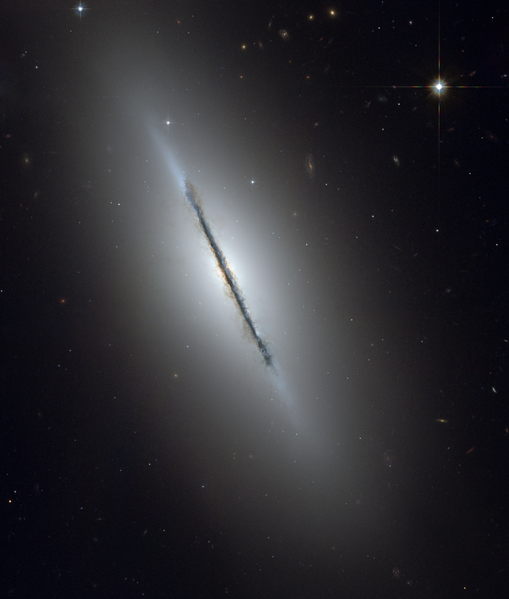Datei:Ngc5866 hst big.png
Erscheinungsbild

Größe dieser Vorschau: 509 × 599 Pixel. Weitere Auflösungen: 204 × 240 Pixel | 408 × 480 Pixel | 652 × 768 Pixel | 870 × 1.024 Pixel | 1.739 × 2.048 Pixel | 3.190 × 3.756 Pixel.
Originaldatei (3.190 × 3.756 Pixel, Dateigröße: 25,78 MB, MIME-Typ: image/png)
Dateiversionen
Klicke auf einen Zeitpunkt, um diese Version zu laden.
| Version vom | Vorschaubild | Maße | Benutzer | Kommentar | |
|---|---|---|---|---|---|
| aktuell | 19:38, 16. Feb. 2009 |  | 3.190 × 3.756 (25,78 MB) | Spencer | {{Information |Description={{en|1=From original NASA press release: :This is a unique view of the disk galaxy en:NGC 5866 tilted nearly edge-on to our line-of-sight. Hubble's sharp vision reveals a crisp dust lane dividing |
Dateiverwendung
Die folgende Seite verwendet diese Datei:
Globale Dateiverwendung
Die nachfolgenden anderen Wikis verwenden diese Datei:
- Verwendung auf ab.wikipedia.org
- Verwendung auf ace.wikipedia.org
- Verwendung auf af.wikipedia.org
- Verwendung auf af.wikibooks.org
- Verwendung auf af.wikiquote.org
- Verwendung auf af.wiktionary.org
- Verwendung auf ak.wikipedia.org
- Verwendung auf als.wikipedia.org
- Verwendung auf am.wikipedia.org
- Verwendung auf am.wiktionary.org
- Verwendung auf ang.wikipedia.org
- Verwendung auf ang.wiktionary.org
- Verwendung auf an.wikipedia.org
- Verwendung auf an.wiktionary.org
- Verwendung auf arc.wikipedia.org
- Verwendung auf ar.wikipedia.org
- Verwendung auf ar.wikibooks.org
- Verwendung auf ar.wikinews.org
- Verwendung auf ar.wikiquote.org
- Verwendung auf ar.wikisource.org
- Verwendung auf ar.wikiversity.org
- Verwendung auf ar.wiktionary.org
- Verwendung auf arz.wikipedia.org
- Verwendung auf ast.wikipedia.org
- Verwendung auf ast.wiktionary.org
- Verwendung auf as.wikipedia.org
- Verwendung auf av.wikipedia.org
- Verwendung auf ay.wikipedia.org
- Verwendung auf ay.wiktionary.org
- Verwendung auf az.wikipedia.org
- Verwendung auf az.wikibooks.org
- Verwendung auf az.wikiquote.org
- Verwendung auf az.wikisource.org
- Verwendung auf az.wiktionary.org
- Verwendung auf bat-smg.wikipedia.org
- Verwendung auf ba.wikipedia.org
- Verwendung auf bcl.wikipedia.org
- Verwendung auf be-tarask.wikipedia.org
- Verwendung auf beta.wikiversity.org
- Verwendung auf be.wikipedia.org
Weitere globale Verwendungen dieser Datei anschauen.
